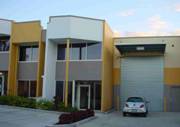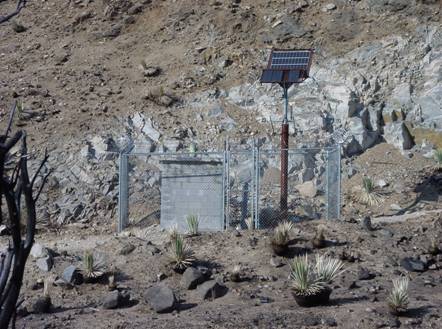

|
GTSM at Southern California Coldbrook (CLT) |

|
CLTCLT is situated in the San Gabriel mountains region installed in late December 1996 as part of a 4 instrument borehole strain array,with Sacks-Evertson dilatometers Chantry (CN, 15km southwest of CLT), Big Dalton (BD, 15 km southeast of CLT), and with PUBA having been installed to the north in 1984.
Gauge angles 1. 46.5 E of N 2. 166.5 E of N 3. 106.5 E of N 4. 76.5 E of N
Raw, exponential models, and residual plots for each measured channel are shown for gauge 1, for gauge 2, for gauge 3, and for gauge 4.
Note that the gauge residuals have a Y axis scale range of +/- 4 microstrain for each component, and show that excluding known tectonic events, and a large local transient offset measured on all strain and tilt channels late in the 1998 rain season, all variation in gauge strain rates have been less than +/- 0.2 microstrain per year over the record.
The residual linear borehole recovery strain rate over the total record is shown in microstrain/year as the "slope" on each plot.
Residual data are recovered from the raw data by extracting least squares fitted exponential(s) and a linear function which describe the processes of curing of the grout and recovery of the borehole, after drilling and installation disturbance of the virgin stress field.
Regions used in the least squares fitting are marked in red on the X axis, and the fit parameters are printed in the upper panelof the figure and are also tabulated elsewhere.
In August 2003, the borehole recovery exponentials were updated from values determined in the early 1990's to incorporate the additional years of data length now available. Changes of strain rates calculated from these residuals are unaffected by the exponential removal procedure and allow the very long term stability (see gauge 1 , gauge 2, gauge 3,and gauge 4)of the instruments to be quantified.
These instruments provide strain data on:
Long term strain accumulation. Long term data records from the from these two instruments,PFT and CLT are available . Also available from the CLT instrument is Borehole Tilt data.
Medium term strain changes associated with earthquake activity and other fault processes.
Coseismic strain offsets useful for constraining earthquake source mechanisms. |

